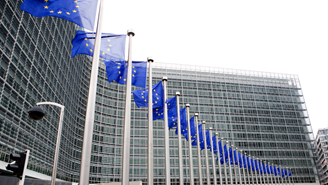How Europe’s Energy Crisis Impacts the Clean Energy Transition
Europe is facing two major crises—an energy crisis, worsened by Russian energy supply disruptions and the challenge of tackling climate change. Renewables have the potential to accelerate EU's energy independence and reduce emissions. Still, there is also an urgent need to secure an adequate energy supply, especially in the coming winter months when heating demand increases. In the short-term, many EU countries are turning to other fossil fuel producers in the Middle East OPEC+ and the US, as well as domestic coal production. For firms deciding which energy projects to invest in, they face a complex question: are energy supply disruptions advancing the EU’s transition to a lower-carbon economy and its energy independence or furthering the continent’s dependence on fossil fuels?
Correlation of Business Ethics and Corporate Culture - 5 Lessons from the Banking Industry
To protect a company’s reputation and economic position, its employees play an essential part in organisational risk mitigation strategy by demonstrating consideration for systemic business risk, taking accountability, and being willing to escalate concerns. Companies with a strong, ethical corporate culture have much to gain—improved employee performance, morale, and retention, and in the long run, bolstering the bottom line.
Sustainable Investment Calculations Under MiFID II and SFDR Remain Perplexing for ESG Investors
The various interpretations of the sustainable investment definition introduced by the SFDR and leveraged in MiFID II leave many market participants unsettled, having to decide between approaches that have different benefits and limitations in the short to medium term.
The Governance of Autonomous Weapons: What Investors Should Know
The ethical implications of lethal autonomous weapons systems (LAWS), often referred to by their dramatic moniker ‘killer robots’, have long been a topic of interest. Until recently, debates about LAWS were relegated as hypothetical, with the technology assumed to be under development and out of reach. Such assumptions may be due for reevaluation, and while a firm conclusion is yet to be drawn, it is worthwhile presenting them to the ESG investment community.
What's Happening in Sustainable Finance: Whether War Could Spur Adoption of Renewables, Thoughts on Just Adaptation, and More
In this month’s round-up of the sustainable finance market, we discuss how geopolitical conflicts could spur the adoption of renewables, considerations for a just adaptation, and much more.
ESG Implications of Russia’s Invasion of Ukraine on the Automotive Industry
The Russia-Ukraine conflict has put more pressure on a sector that was already constrained by the disrupted supply chains, brought about by pandemic-induced congestions and shortages. Additionally, the surge in fuel price is already affecting customers, although it may accelerate the adoption of electric vehicles (EVs) as a side effect. However, the scarcity of minerals, which are necessary for semiconductor manufacturing, may further exacerbate the chip shortage that has afflicted the automotive industry since 2020.
Mapping Pay to Performance: ESG-Linked Compensation Around the World
In this infographic, we examine the state of ESG pay-links, including their adoption in long-term incentives and short-term incentives, in five regions: Europe, the United States and Canada, Asia-Pacific, the Middle East and Africa, and Latin America and the Caribbean.
The Sustainalytics Podcast | Addressing Material ESG Issues: Practical Insights From our Expert Webinar Panel
Sharing insights from our webinar “Addressing Key Corporate ESG Issues: Lessons From Industries With High ESG Risk”. In clips from the live session, our sector analysts discuss the importance of measuring and managing material ESG issues such as environmental impacts, community relations and occupational health and safety.
Russia-Ukraine Crisis Could Spell Unforeseen ESG Risks for Insurers
The Russia-Ukraine conflict and the subsequent sanctions on Russian entities have led to material and wide-ranging impacts on diversified sectors and international firms. However, company disclosures and other sources suggest that the conflict’s primary impact on the global insurance industry is limited for two main reasons
How a Business Service Management Platform for Cloud and IT Evolved Its ESG at Strategic Scale
BMC Software gained the holistic view of its environmental, social, and governance efforts the company needed to measure its impact, understand how it could scale ESG programs, and communicate successes to stakeholders.
ESG Implications of Russia’s Invasion of Ukraine on the Aviation and Defense Sectors
The aviation industry is feeling the impact of rising fuel costs as an immediate repercussion of the conflict in Ukraine. In particular, the airline sector is still facing significant challenges in mounting a steady recovery from the COVID-19 crisis. On the other hand, the defense industry may be presented with opportunities in light of increased government spending in the aftermath of the invasion.



















